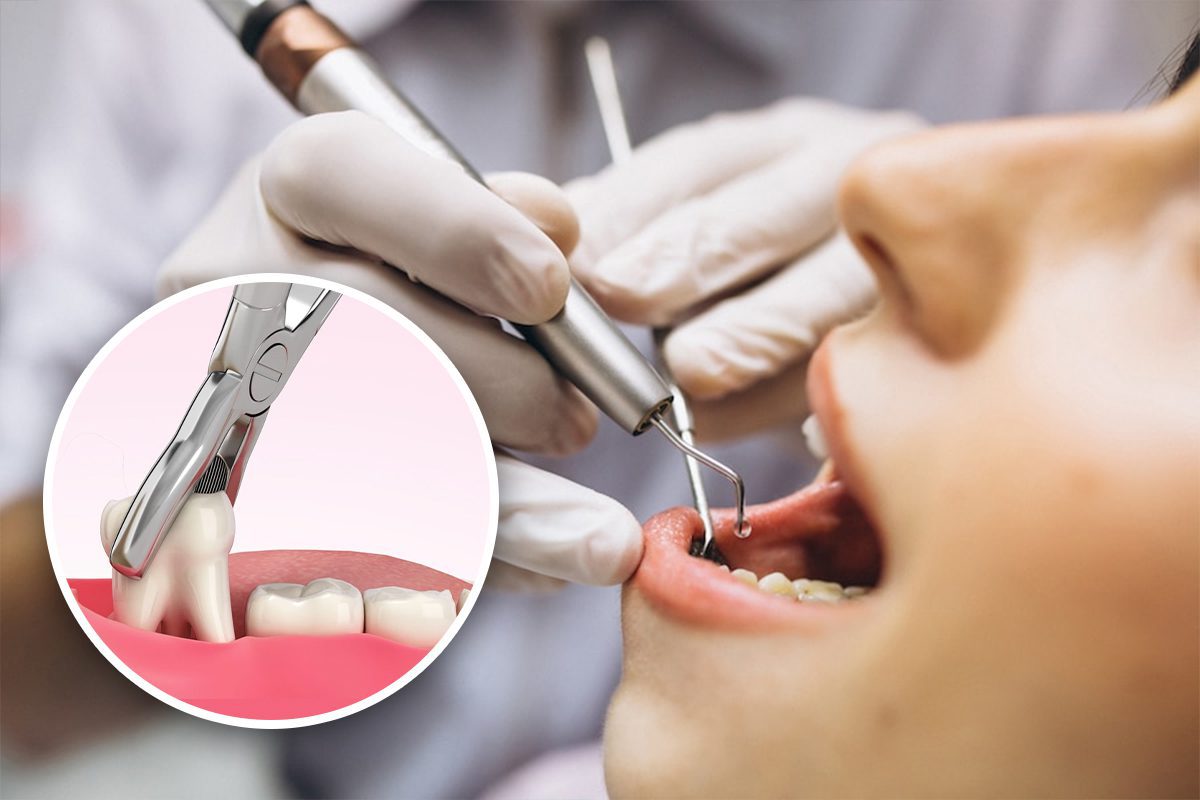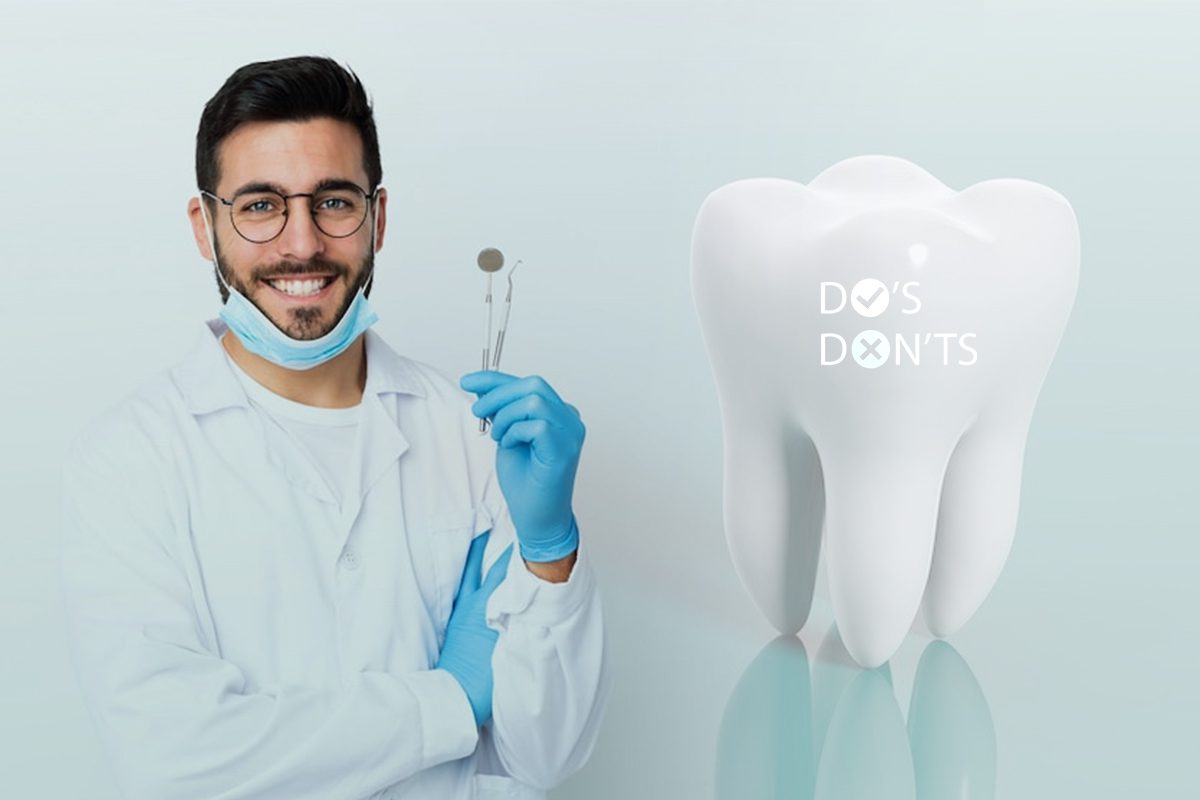What are periodontal diseases?
Periodontal disease is primarily the result of infection and inflammation of the gums and the bone that surrounds and supports the teeth which ultimately results in teeth removal. In an early stage, called gingivitis, the gums can become swollen, red, and bleed. In its most serious form, called periodontal disease, the gums can become dislodged from the tooth, bones can be lost, and teeth can loosen or fall out.
Periodontitis occurs mainly in adults, and Periodontal diseases and cavities are the two biggest threats to dental health that may lead to tooth extraction. A recent CDC report provides the following data on the prevalence of periodontal disease in the United States:
- 47.2% of adults over the age of 30 have some form of periodontal disease.
- Periodontitis increases with age. 70.1% of adults 65 years and older suffer from periodontitis.
- This condition is more common in men than women (56.4% vs. 38.4%), those living below the state poverty line (65.4%), those with less than a high school graduation secondary (66.9%), and current smokers (64.2%)
What are the symptoms of periodontal disease?
Periodontitis is usually silent, which means that symptoms, especially pain, may not appear until the disease is advanced. However, you should still lookout for the following signs and symptoms, including:
- Bleeding when brushing, flossing, or eating certain foods
- Shrinking or retracting gums your teeth, making teeth appear longer than before
- Loose or separated teeth
- pus between the gums and teeth
- mouth sores
- persistent bad breath
- a change in fit Partial Dentures
Causes of periodontal disease
Plaque might be the leading cause of gum disease. However, other factors can also contribute to periodontal disease. These include:
- Medications can affect oral health, as some reduce the flow of saliva, which protects the teeth and gums. Some drugs, such as the anticonvulsant drug Dilantin and the antianginal drugs Procardia and Adalat, can cause abnormal growth of gum tissue.
- Bad habits like smoking make gum repair difficult.
- Poor oral hygiene habits, such as not brushing teeth and flossing daily, favor gingivitis.
- Family history of dental disease may be a factor in the development of gingivitis.
How did you get rid of gum disease?
Gum disease can be cured at the dental clinic at places like antwerpen. It is about removing bacteria in plaque from the mouth and returning the gums to a healthy state. The first step to eliminate this pain is proper education to clean your teeth at home effectively.
A home care routine that we normally recommend is:
- Brush twice a day with an electric toothbrush.
- You have to use the toothbrush in a certain way; it is surprising how many people are wrong. We always ask them to teach us how to brush their teeth, and they invariably have poor technique. People use the electric toothbrush the same way they use their manual toothbrush, and it just doesn’t work. Anything longer becomes less effective.
- Clean the spaces between the teeth. This is an important area that many people forget. Try to use inter dental brushes at least once a day and make sure you use the correct size. A common mistake is using brushes that are too small, which means they won’t clean effectively. As a general rule of thumb, choose the largest that you can fit between the gap without the metal part in the middle touching the teeth.
Remember, this is general advice, and getting specific advice for your mouth is important because we are all different. The hygienist/dentist cannot clean their teeth daily, so it is up to you to maintain good oral hygiene.
The second most important aspect is professional dental cleaning. Gum disease must be properly diagnosed, as there are many different types, and a plan of action needs to be established. Since you cannot clean under the bags (as described above), you need professionals to clean them for you.
For advanced gum disease, we typically do the following:
- Record the six pouch level points around each tooth
- Record plaque and bleeding levels.
- Clean under the gums.
- During this time, regular maintenance is required, including light cleaning of the gums.
- We look at points one and two again to see the difference.
- We clean again under the gums in the areas that have not healed.
- Wait a few months to check to heal.
- regular dental checkups
Once the depths of the bags have improved and you can keep them at home, we set a recovery interval based on your risk factor.
- High – three months
- Medium – six months
- Low – possibly annually
Is Periodontal Disease the reason for wisdom tooth extraction?
Pinched or partially erupted wisdom tooth extraction can be a root cause of periodontal disease. It is a condition that begins with no immediate or low pain.
Even mouthwashes and gargles are ineffective at cleaning behind those molars or rinsing food and plaque under the gums. Localized infection tends to develop in the absence of proper care, which puts both the wisdom teeth and neighboring teeth at risk.
Neighboring teeth are at increased risk for bone loss and cavities, and many patients experience uncontrollable bad breath. Over time, if inflammation and infection persist, you may notice tenderness or swelling in the area and have a greater tendency to bite your cheeks or gums while talking or chewing.
To restore ideal health and reduce the risk of periodontal disease and other complications, dental services like oral surgery are generally recommended wisdom teeth pulling as soon as possible.
But, you need not to worry about all such dental problems. Proper care and regular checkups at Smile Delhi can help you maintain a good oral health. Feel free to contact us to know more about wisdom teeth extraction cost.




